Lockheed
Martin/Boeing
F-22
Raptor
F-22A Raptor, FB-22 and Proposed Variants
|

F-22A Raptor of the 3rd Fighter Wing based at
Elmendorf, Alaska (© 2010, Jeroen Oude
Wolbers).
|
|

|

|
#1 - Survival In Combat
Against Modern Weapons
Proliferation
of
Advanced
High
Technology
Missiles and Aircraft
Since the end of
the Cold War,
the Russian and Chinese defence industries have absorbed most of the
advanced technology in the globalised market. The most recent
generation of radars, Surface to Air Missiles and fighter aircraft they
have developed can produce air defence systems which are completely
impenetrable to all
United States combat aircraft other than the F-22A Raptor and B-2A
Spirit. The new stealthy Sukhoi PAK-FA directly challenges the F-22A
Raptor. The result of this is that the United States will lose access
to many theatres of operation on the global stage, as these new weapons
proliferate, unless the United States deploys ~700 F-22A Raptors - the
number originally planned for in the first place.
|
|
|
Chengdu J-XX
[J-20] Stealth Fighter
Prototype; A Preliminary
Assessment |
|
|
Assessing
the
Sukhoi
PAK-FA |
|
|
Surviving
the
Modern
Integrated
Air
Defence
System / Assessing
the F-22 Raptor |
|
|
Russian
High
Technology
Weapons:
Transforming the Strategic Balance in Asia |
|
|
Assessing
Russian
Fighter
Technology |
|
|
The
Russian
Philosophy of Beyond
Visual Range Air Combat |
|
|
Flanker
Radars in Beyond
Visual Range Air Combat |
|
|
Sukhoi
Flanker
Fighter
Technical
Analysis |
|
|
Russian
Counter
Stealth
Radars |
|
|
Hybridisation
of
Surface
to
Air
Missile Systems |
|
|
Surface
to
Air
Missile
System Radar Index |
|
|
SA-10,
SA-20
and
SA-21
Surface to Air
Missile Systems |
|
|
SA-12
and
SA-23 Surface to Air Missile Systems |
|
|
|
|
|
|
|
|
#2 - There Are NO
Alternatives to
the F-22 Raptor
The
F-35 Joint Strike Fighter is NOT
a Substitute for the F-22 Raptor
The widely held view in
Western
bureaucratic circles, that the F-22 and F-35 are interchangeable
aircraft, is not true and can never be true. The F-22 provides close to
three times the capability of the F-35 at a similar unit procurement
cost. The F-35 lacks the performance of the F-22, the survivability of
the F-22, the firepower of the F-22, and the deployability of the F-22.
The limitations of the F-35 are inherent in its basic design and cannot
be fixed by design modifications or upgrades. Poorly defined basic
specifications for the F-35 and inadequate prototyping have resulted in
an expensive aircraft which cannot be used in combat situations other
than benign, requires support by a lot of F-22 Raptors and aerial
tankers, and requires long concrete runways for overseas deployments.
|
|
|
Assessing
Joint
Strike
Fighter
Defence
Penetration
Capabilities / Stealth
Modelling |
|
|
Assessing
Joint
Strike
Fighter
Air
Combat
Capabilities |
|
|
Assessing
Progress
on
the
Joint
Strike Fighter
Program |
|
|
Assessing
the
F-35 Joint Strike Fighter |
|
|
Will
the
US Air Force be Annihilated in the Next War? |
|
|
F-35
Joint
Strike Fighter - A Cold War Anachronism? |
|
|
Back
to
the
Future: Joint
Strike Fighter = Thunderchief II? |
|
|
|
|
|
|
|
|
#3 - Legacy Fighters Are No
Longer Viable
Decline
of
the
Legacy
US
Fighter
Fleet
of F-15s, F-16s and F/A-18s
Most of the legacy
US
fighter
fleet was built during the late Cold War period, and was designed
during the 1970-1980s. Not only are these aircraft no longer able to
survive
against modern Russian designed fighter and air defence technology, but
the F-15C, F-16A-D and F/A-18A-D air combat fighters are increasingly
suffering from airframe structural fatigue life
exhaustion. Much of the F-15C fleet has also suffered from
manufacturing defects in their structure, further shortening the life
of these fighters. The F-117A Nighthawk stealth fighter fleet was
recently retired altogether. Unless the United States industry
manufactures a significant number of new and survivable fighters over
the next decade,
we will observe a large reduction in United States fighter fleet sizes.
Of all of the fighters currently being produced in the United States,
only the F-22 provides a good return on investment.
|
|
|
F/A-18E/F
Super
Hornet
vs.
Sukhoi Flanker |
|
|
McDonnell Douglas F-15
Eagle |
|
|
F-15E
Dual
Role
Fighter |
|
|
Lockheed
F-117A Stealth Fighter |
|
|
Managing
Ageing
Aircraft |
|
|
|
|
|
|
|
|
|
|
|
Without
sufficient
numbers
of
F-22 Raptors the United States military will soon lose the conventional
strategic advantage it has enjoyed since 1945.
|
|
|
Numbers
Matter:
Strategic Consequences of F-22 Termination |
|
|
When
America’s Stealth
Monopoly Ends,
What's Next? |
|
|
Air
Combat: Russia’s
PAK-FA
versus the F-22 and F-35
|
|
|
Will
the US Air Force be
Annihilated in
the Next War?
|
|
|
F-35
JSF:
Cold War Anachronism Without a Mission |
|
|
|
|
|
|
|
|
F-22 Raptor - Derivatives and
Proposed Variants
The F-22 Raptor is the only
viable combat aircraft design left in the Western world, following the
emergence of the T-50 PAK-FA and J-XX/J-20 stealth fighter designs.
Further evolution of the F-22 series and the development of derivative
designs is the only path left for US air power which can produce viable
numbers of viable designs in a reasonable timeline.
|
|
|
Air Force
FB-22
Bomber Concept
|
|
|
Navalising
the F-22 Raptor - Restoring America's Maritime Air Dominance |
|
|
F-22A
Raptors for the Marine Corps |
|
|
|
|
|
 |
|
|
|
|
F-22A
Raptor
-
The
Australian
Context
In the words of the Chief of the Defence Force
(formerly
the Chief of Air Force) -
'The
F/A-22
will
be
the
most
outstanding fighter aircraft ever built. ... Every fighter pilot in the
Air Force would dearly love to fly it.'
Now in full rate production, the
F-22A is far superior
to
the JSF currently envisaged by the Department as the RAAF's future
combat aircraft. Unfortunately, the F-22A has been the subject of
intensive yet always dishonest criticism in Australia, most often
through misrepresentations of the aircraft's diverse capabilities, its
applicability to Australia's needs and its affordability.
The Director of the New Air
Combat Capability (D-NACC)
has
claimed in the media and representations to Government and the
Parliament that -
'There's
more
to
air
combat
capability than just speed, thrust, payload and wing loading. Air
combat in the 21st century is all about systems and networks of systems
- the old rules of thumb about what gives you a winning edge are
obsolete.' (D-NACC, Canberra, Defence Watch Seminar, May 2004)
This statement is a good example
of the reactive and
convoluted thinking which has pervaded our Department of Defence since
the late 1990s and is reminiscent of other great faux pas in military
capability planning (eg. the British TSR-2 Fiasco [Click for more ...] and the
infamous Duncan Sandys 1957 Defence White Paper which almost killed
British aviation).
The claim that 'Air
combat
in the 21st century is all about systems and networks of systems' represents
only
half
the
story
-
a
propensity
for
which is a common ailment in
Defence today - and, with the proliferation of like systems in our
region, will only maintain parity with other regional capabilities.
The statement that '...the
old
rules
of
thumb
about what gives you a winning edge are obsolete'
is of most concern and reflects a view held by some in Russell Offices
that the fighter pilot's holy grail of being able to engage, disengage
and re-engage at will throughout the space/time continuum of air
combat,
while staying outside an opponent's kill envelope, no longer applies.
Nothing could be further from
the truth, as the air
combat
kill ratio of the supercruising, high agility F-22A attests, and the
soon to emerge supercruising derivatives of the high agility Su-30
family of aircraft will attest. With the advent of agile and smart
stand off weaponry, the day of the 'canopy to canopy' air combat
knife-fight portrayed in the Hollywood film, 'Top Gun', may well be
over.
However, it is being replaced by
the even more
demanding, in
both situational awareness and kinematics, aerial manoeuvring which now
takes place 'Beyond Visual Range', where the fighter pilot's holy grail
will continue to be the determinant as to whether one lives or dies.
This website will post a
selection of relevant
articles,
submissions and papers.
|
|
|
|
|
|
Raptor performs first drop of small
diameter bomb. An F-22 Raptor
drops a small diameter bomb from its weapons bay during a test mission
Sept. 5. The test marks the first airborne separation of a small
diameter bomb from the internal weapons bay of an F-22.
Testing of the SDB with the F-22 is part of the Increment 3.1 upgrade
to the aircraft. Maj. Jack Fischer, 411th Flight Test Squadron test
pilot noted that
"Targets we can't get with most weapons, we can get with the F-22
because we have stealth, with this weapon and aircraft,
there is no place we can't reach and no place for an enemy to hide." (Photo by Darin
Russell, Text by
95th Air Base Wing Public Affairs, US Air Force).
(U.S. Air Force photo)
|
F-22A
Exercises and
Deployments [Click
for more ...]
|
What would an
F-22A Raptor look like in RAAF colours? [Click for more ...]
|
|
|
The
Parliamentary
Debate
[Click
for
more
...]
|
Related
Links [Click
for
more
...]
|
|

|
The
first
F-22A
assigned
to
the
27th
Fighter
Squadron
of the 1st Fighter
Wing, Langley, Virginia, the first operational unit to fly the F-22A.
The aircraft is flown by Lt. Col. James Hecker, USAF, over Fort
Monroe, Virginia, on May 12th, 2005. At full strength the 27th FS will
have twenty six F-22A aircraft (US Air Force photo).
|

(Lockheed-Martin
Image)
|
|
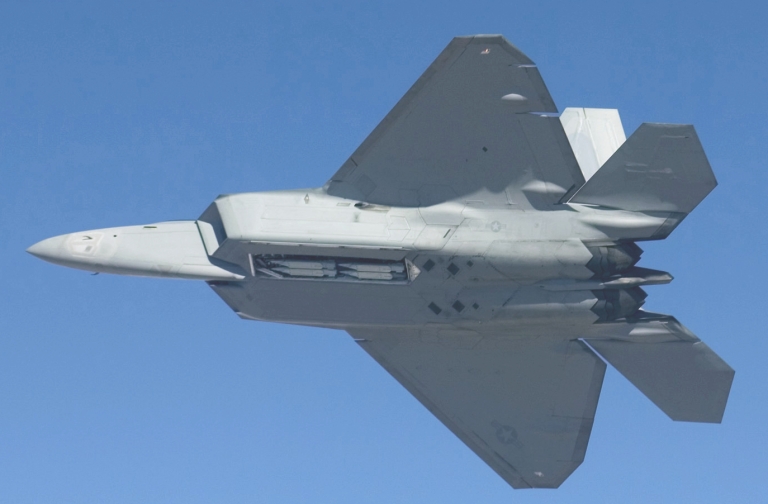
|
An F-22A
Raptor
performing a test flight early February, 2007, with four GBU-39/B Small
Diameter Bombs on
board. The F-22A will carry up to eight SDBs, while retaining two
AIM-120 AMRAAMs (US Air Force).
|
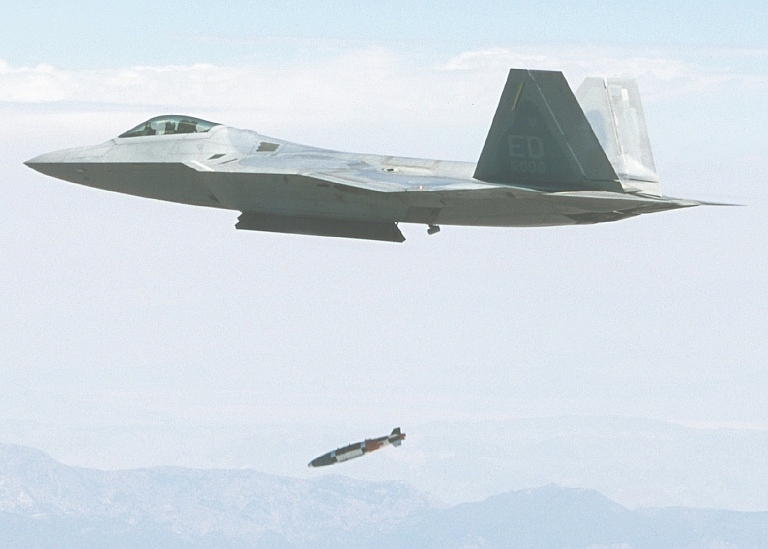
|
Maj.
John Teichert, USAF, of the 411th Flight Test Squadron
performs the first supersonic release of the 1,000 lb GBU-32 Joint
Direct Attack Munition over the Mojave test range, on the 14th July,
2005 (US Air Force).
|
|
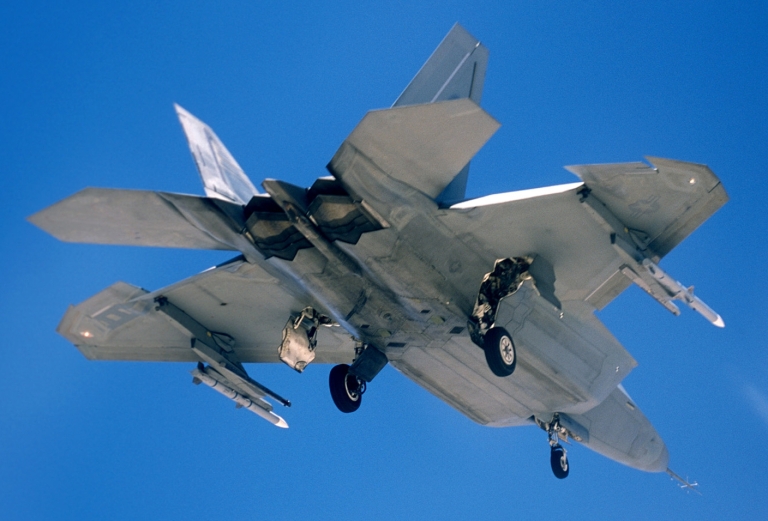
|
| The two most
common misconceptions concerning the F-22A in Australia are the
belief
that the aircraft cannot carry external stores, and the belief that the
aircraft cannot perform strike roles effectively. Both ideas are simply
falsehoods without substance (U.S. Air Force photo) |
|
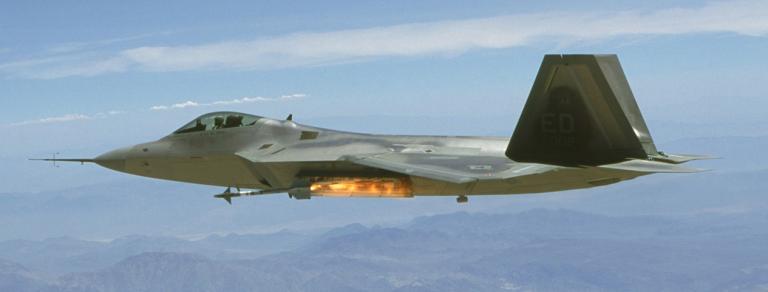 |
An F-22A Prototype
launching
an AIM-9M missile from its left internal bay. The aircraft has
two
large ventral bays for AIM-120 and guided bombs, and paired bays for
short range missiles (US Air Force photo).
|
|

|
This portrait shows the
nose
chining, serrated radome boundary, and cockpit framing. The F-22A is
the stealthiest high performance fighter ever built (US Air
Force photo).
|
|
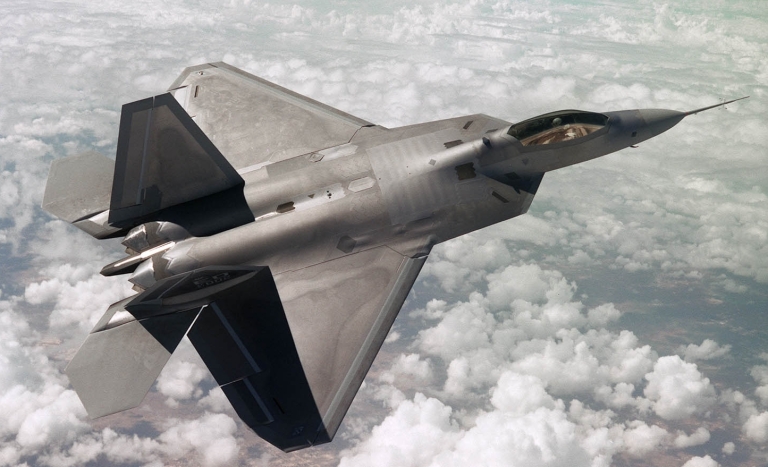
|
This image shows the
planform
alignment of the F-22A, and especially the careful edge alignment of
the thrust vectoring nozzles fitted to the F119-PW-100 supersonic
cruise
engine (US Air Force photo).
|
|

|
| A
low
altitude pass being flown
by Edwards AFB based development aircraft #002 (US Air Force photo). |
|
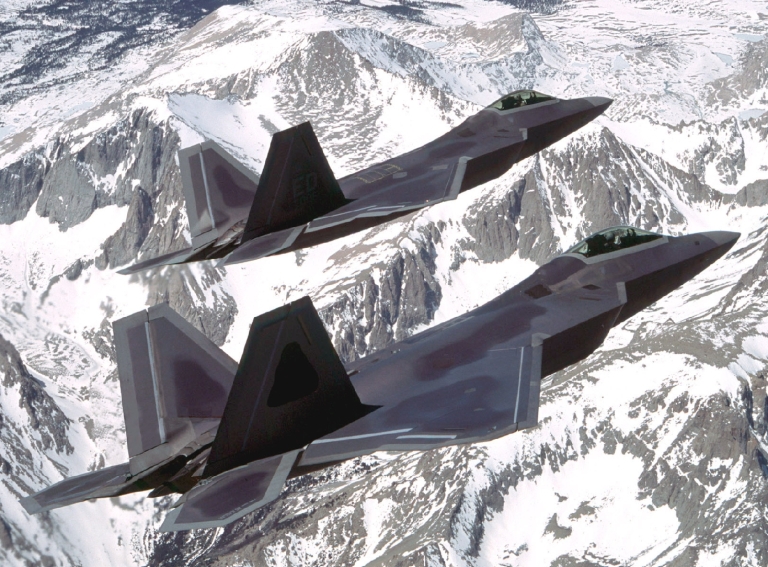
|
| A
pair of
development aircraft
-
this image shows the chining and blending to effect (US Air Force
photo). |
|
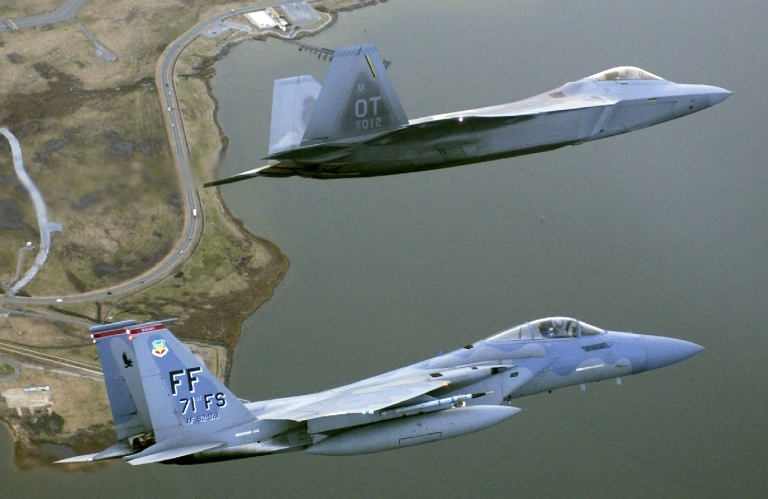
|
| An
F-15C formates on an
F-22A.
The F-22A was intended to replace the US Air Force F-15C, it is now
likely to also replace the F-117A and F-15E (US Air Force photo). |
|

|
| FSD
Raptor 002 refuelling from
a
Boeing KC-135E Stratotanker. The F-22A is NOT a small fighter - it
carries nearly 21,000 lb of internal fuel (US Air Force photo). |
|
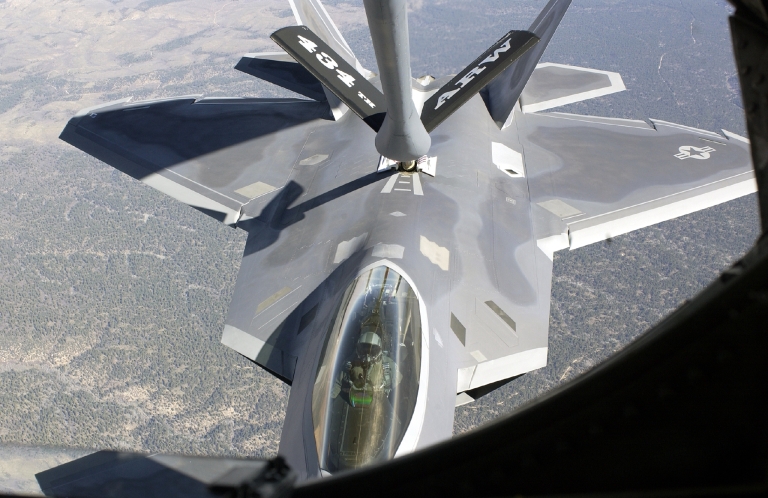
|
| 434th
ARW
KC-135 boomer's view
of an F-22A taking gas (US Air Force photo). |
|

|
| An
F-22A
refuels from a
KC-10A
Extender (US Air Force photo). |
|

|
| Wind
tunnel testing of a
stealthy external stores pod, designed to carry weapons such as the
GBU-39/B and GBU-40/B Small Diameter Bomb. The pylons are rated for
5,000 lb stores (US Air Force photo). |
|
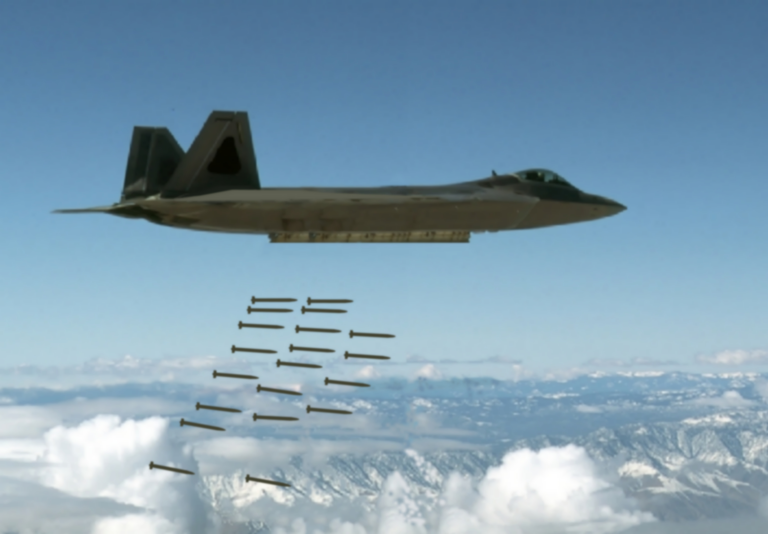 |
| The FB-22A 'regional bomber' is a enlarged
derivative of the F-22A with a larger wing, proposed primarily to
provide a stealthy, supercruising F-111/FB-111A class strike platform
(U.S. Air Force original) |
|
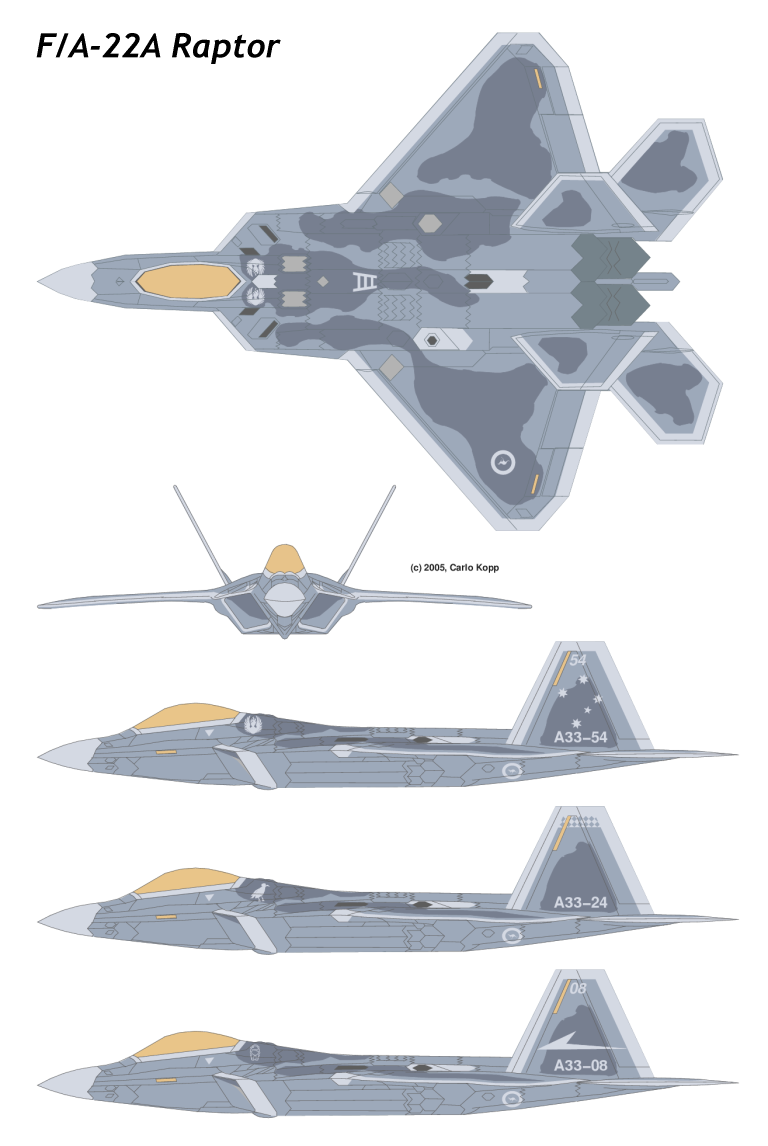
|
|
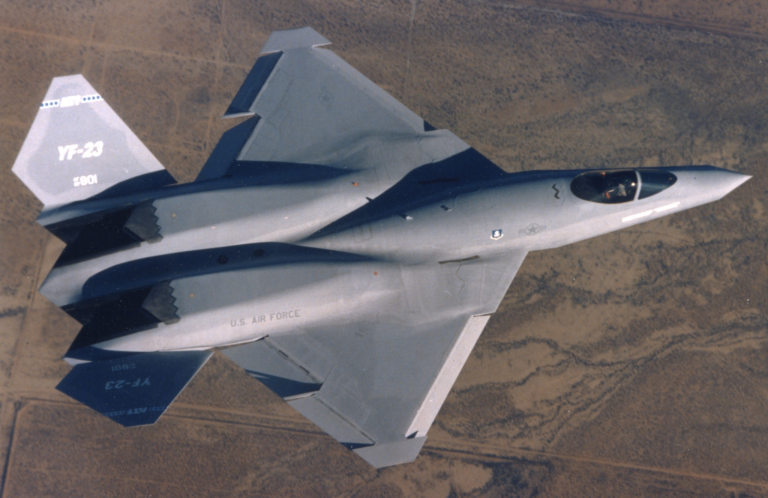
|
| The
unsuccessful competitor in the Advanced Tactical Fighter bid was
Northrop's YF-23A, which continues to set the benchmark for speed and
low observables shaping in second generation stealth fighters. Note the
low observable cooled exhaust troughs (U.S. Air Force photo) |
|
|
![Home - Air Power Australia Website [Click for more ...]](APA/APA-Title-Main.png)
![Sukhoi PAK-FA and Flanker Index Page [Click for more ...]](APA/flanker.png)
![F-35 Joint Strike Fighter Index Page [Click for more ...]](APA/jsf.png)
![Weapons Technology Index Page [Click for more ...]](APA/weps.png)
![News and Media Related Material Index Page [Click for more ...]](APA/media.png)
![Surface to Air Missile Systems / Integrated Air Defence Systems Index Page [Click for more ...]](APA/sams-iads.png)
![Ballistic Missiles and Missile Defence Page [Click for more ...]](APA/msls-bmd.png)
![Air Power and National Military Strategy Index Page [Click for more ...]](APA/strategy.png)
![Military Aviation Historical Topics Index Page [Click for more ...]](APA/history.png)
![Intelligence, Surveillance and Reconnaissance and Network Centric Warfare Index Page [Click for more ...]](APA/isr-ncw.png)
![Information Warfare / Operations and Electronic Warfare Index Page [Click for more ...]](APA/iw.png)
![Systems and Basic Technology Index Page [Click for more ...]](APA/technology.png)
![Related Links Index Page [Click for more ...]](APA/links.png)
![Homepage of Australia's First Online Journal Covering Air Power Issues (ISSN 1832-2433) [Click for more ...]](APA/apa-analyses.png)
![Home - Air Power Australia Website [Click for more ...]](APA/APA-Title-Main.png)
![Sukhoi PAK-FA and Flanker Index Page [Click for more ...]](APA/flanker.png)
![F-35 Joint Strike Fighter Index Page [Click for more ...]](APA/jsf.png)
![Weapons Technology Index Page [Click for more ...]](APA/weps.png)
![News and Media Related Material Index Page [Click for more ...]](APA/media.png)
![Surface to Air Missile Systems / Integrated Air Defence Systems Index Page [Click for more ...]](APA/sams-iads.png)
![Ballistic Missiles and Missile Defence Page [Click for more ...]](APA/msls-bmd.png)
![Air Power and National Military Strategy Index Page [Click for more ...]](APA/strategy.png)
![Military Aviation Historical Topics Index Page [Click for more ...]](APA/history.png)
![Intelligence, Surveillance and Reconnaissance and Network Centric Warfare Index Page [Click for more ...]](APA/isr-ncw.png)
![Information Warfare / Operations and Electronic Warfare Index Page [Click for more ...]](APA/iw.png)
![Systems and Basic Technology Index Page [Click for more ...]](APA/technology.png)
![Related Links Index Page [Click for more ...]](APA/links.png)
![Homepage of Australia's First Online Journal Covering Air Power Issues (ISSN 1832-2433) [Click for more ...]](APA/apa-analyses.png)







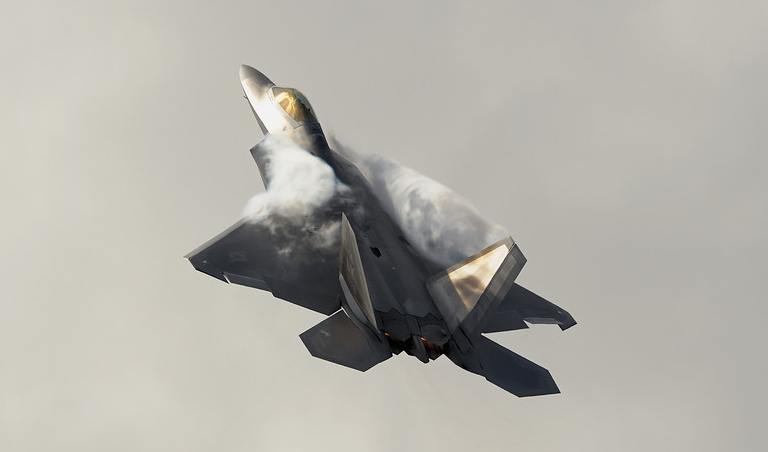
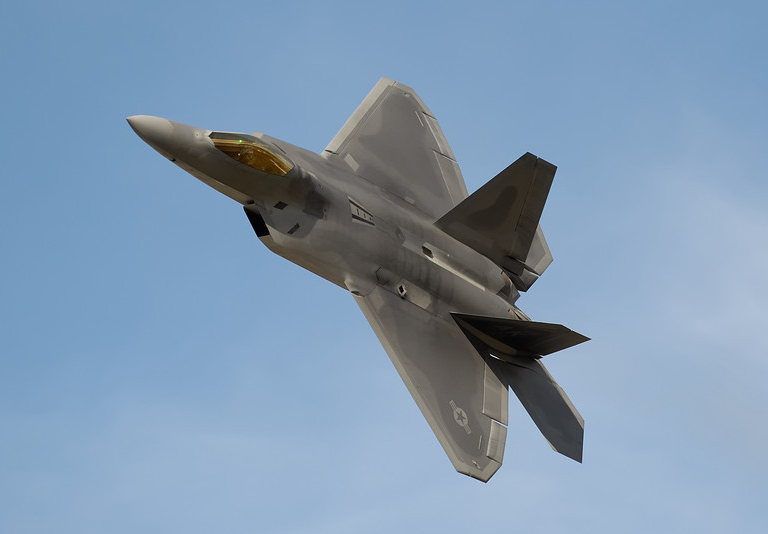
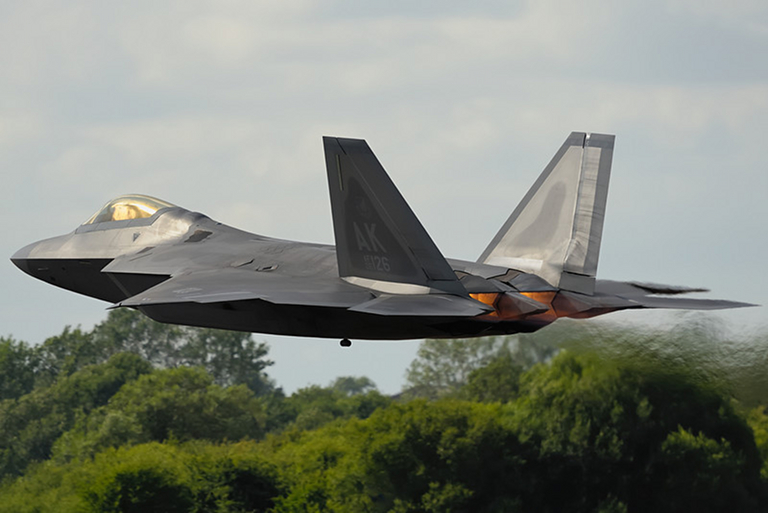
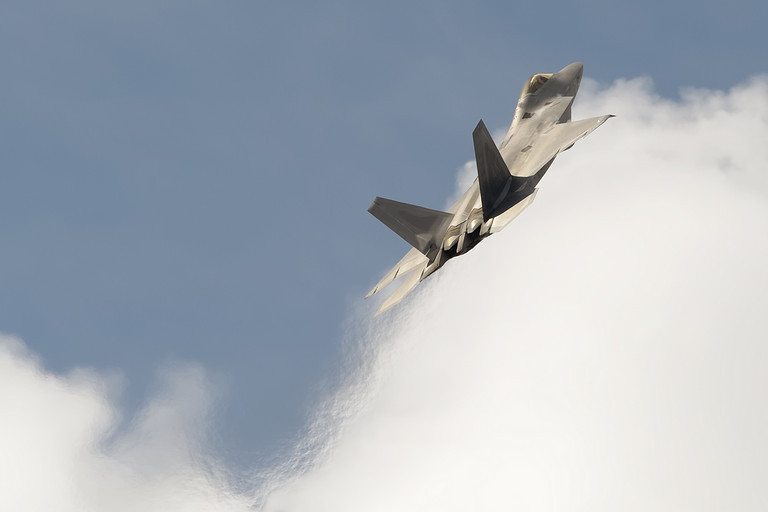


















![Sukhoi PAK-FA and Flanker Index Page [Click for more ...]](APA/flanker.png)
![F-35 Joint Strike Fighter Index Page [Click for more ...]](APA/jsf.png)
![Weapons Technology Index Page [Click for more ...]](APA/weps.png)
![News and Media Related Material Index Page [Click for more ...]](APA/media.png)
![Surface to Air Missile Systems / Integrated Air Defence Systems Index Page [Click for more ...]](APA/sams-iads.png)
![Ballistic Missiles and Missile Defence Page [Click for more ...]](APA/msls-bmd.png)
![Air Power and National Military Strategy Index Page [Click for more ...]](APA/strategy.png)
![Military Aviation Historical Topics Index Page [Click for more ...]](APA/history.png)
![Information Warfare / Operations and Electronic Warfare Index Page [Click for more ...]](APA/iw.png)
![Systems and Basic Technology Index Page [Click for more ...]](APA/technology.png)
![Related Links Index Page [Click for more ...]](APA/links.png)
![Homepage of Australia's First Online Journal Covering Air Power Issues (ISSN 1832-2433) [Click for more ...]](APA/apa-analyses.png)